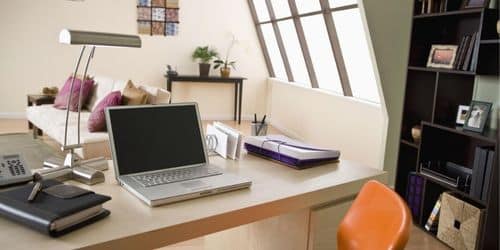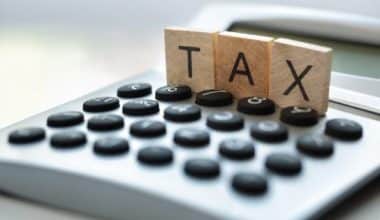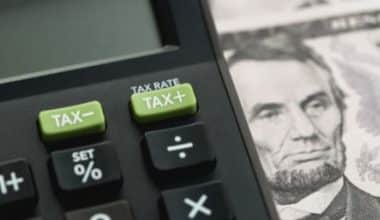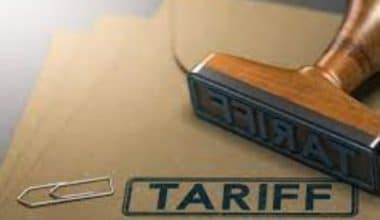You might wonder whether working from home will result in any tax breaks since so many of us are now doing so. Should you worry about starting an audit if your business qualifies you for a home office tax deduction? How does a company initially meet the home office deduction requirements? This article will cover the most frequently asked questions about this tax deduction.
Home Office Tax Deductions
Home office costs are those incurred while conducting business or engaging in work-related activities inside a primary residence. Within specific parameters, you can deduct expenses from your federal taxes that you incur while running a business out of your house. To qualify for the home office deduction, taxpayers must regularly and exclusively use a portion of their home or another building on their property as their primary place of business. If you are self-employed, home office deductions can help you pay fewer taxes by offsetting costs related to a home-based business. The home office deduction enables eligible taxpayers to write off some home costs when filing their taxes
Any utilities or services used only for business-related activities are entirely deductible. Utilities include equipment for computers, phones, and offices. The number of home office deductions allowed will depend on various factors, including how a homeowner files their returns and earnings. Still, you can claim several expenses as long as you incur them in ordinary business.
When filing their taxes and using the home office deduction, qualified taxpayers can deduct a specific amount of their home office expenses. The IRS lets you write off rent, utilities, real estate taxes, repairs, maintenance, and other costs related to your business. If you often use part of your home exclusively for business-related activity,
The space must also be your primary place of business or where you often meet with clients. It does not have to be the only place you work; it can be where you usually do administrative activities for your business. If you use a part of your home for your business, you can claim the home office deduction if you meet the IRS‘ requirements and keep good records. Here’s how it works
Home Office Deduction Requirements
Taxpayers can determine whether they qualify for the home office deduction by looking at the requirements listed below:
Concerning home office deduction, “home” refers to any home, condo, mobile home, or similar property, as well as structures on the property, such as a barn, studio, etc.
Both homeowners and renters are eligible for the home office deduction, computed on Form 8829. Unfortunately, you don’t qualify for the home office tax deduction if you’re an employee working remotely rather than a business owner. The deduction for a home office is not available to employees.
Taxpayers may write off a certain amount of expenses. Mortgage interest, insurance, utilities, repairs, upkeep, depreciation, and rent are a few examples. In general, there are two prerequisites for the taxpayer’s residence to be eligible for a deduction:
- In most cases, you must use a specific area of the house exclusively to conduct daily business. For instance, if a taxpayer uses an additional room exclusively and regularly for their business, they are only allowed to deduct that portion of their home office expenses.
- Usually, the taxpayer’s primary place of business must be their home. If taxpayers conduct administrative or managerial tasks at home because there is no other place to do so, they can also satisfy this requirement. As a result, a person who runs a business outside the home and uses the home office deduction may still be eligible.
How to Calculate the Home Office Deduction
You can calculate the deduction in two ways. Eligible taxpayers can choose between using the standard method or the simplified option to calculate how much they can write off for home office expenses or deductions. The standard option necessitates more complex calculations and record-keeping, but it may result in a larger deduction. The simplified option may provide less of a tax break despite being more straightforward.
The Standard Option
With the standard, you deduct your actual expenses. When filing taxes using the standard deduction method, the amount that you can deduct for a home office depends on the percentage of the home used for business purposes. To deduct indirect expenses, taxpayers who use a whole room or a portion of a room to conduct their business must calculate the percentage of the home used for such activities. You can deduct all of your direct costs.
It also reduces a portion of your overall house expenses based on the total area of your home that you convert as a home office.
You can also deduct a part of your property taxes and depreciation from your home. Those calculations are complicated, but the instructions for IRS Form 8829 can help.
The Simplified Option
The IRS introduced a more straightforward option for deducting home office expenses in 2013. The simplified option charges $5 per square foot for home business use. This option can be as big as 300 square feet. This method allows for a maximum deduction of $1,500. Instead of keeping records of expenses, you can reduce $5 per square foot of your home office to a maximum of 300 square feet. The maximum deduction is $1,500. If your home office qualifies, you can take this tax break. Therefore you will avoid keeping records of all your home office expenses.
The simplified approach is simple and easy to follow because it eliminates the need for meticulous record-keeping. If you use the simplified deduction method of $5 per square foot for a maximum of 300 feet, you can deduct the amount based on the period you worked from home. For example, you could take the home office deduction if you worked from your home office.
How To Determine Your Home Office Deduction
If you use the simplified method, the deduction is made directly on Schedule C. This lists your business’s revenue and outgoing costs. Using the standard deduction method, you must include Form 8829 with your income tax return.
Calculating expenses begins with dividing the workplace’s square footage by the home’s total square footage.
Example 1
First, calculate the square footage of your home office. If your home office is a 12-foot by 13-foot room, its total square footage is 156 square feet. That is, (15 feet by 13 feet is 156 square feet). Second, find out the square footage of your home. For example, let’s say your home has a total area of 1,200 square feet. Finally, divide your office’s size by your house’s scope. For our example, 156/1,200 = 0.13 (or 13%). This shows percentage of your overall home expenses you can apply to the home office tax deduction.
Example 2
Using a simplified square footage calculation, you can calculate your home office business deductions.
Measuring the area of your home office as a percentage of your property’s total area is the most accurate way to determine the business percentage of your home. For instance, if your home has 1,200 square feet overall and your office is 125 square feet, your percentage would be 10.4%. By dividing the number of rooms used by the business by the total number of rooms in the house, you can calculate the business’s percentage in this situation.
What Expenses Can Be Claimed as a Tax Deduction?
It’s important to note that you cannot write off all of your home office expenses as a tax deduction. Only the portion of these expenses related to the home office could be claimed as a tax deduction unless you specifically incurred the expenses only for your home office.
If you satisfy the prerequisites listed above, you may only deduct the following expenses from your taxable income:
- The building’s rent
- Cost of property repairs
- Any additional costs related to the property, such as interest on a bond, electricity, domestic workers’ salary, levies, etc
On the other hand, the following expenses are typically not allowed as a tax deduction as they do not comprise expenses incurred: phone costs, monthly subscriptions, internet expenses; stationery; and printing expenses.
How Much of Your Home Office Can You Write Off on Taxes?
To determine the percentage of your home used for business, you must divide the area dedicated to business use by the total area of your home. This method is known as the “home office simplified method.” If your home office deductions exceed your gross income, you can carry the excess over to subsequent tax years.
Determine how much of your home counts as a home office before using the home office simplified method. After that, you multiply the total actual expenses by that percentage. To benefit from this, you must maintain accurate records to keep track of each business deduction and claim it on your Schedule C.
What Are the Three General Rules for Qualifying Your Home Office as a Business Expense?
If you are self-employed and part of your home is for business use, you can take advantage of the home office deduction. To qualify for the home office deduction, there are three general requirements for a home office deduction that the IRS is mainly concerned with: exclusivity, regularity, and precedence.
#1. Exclusivity
The “exclusivity rule” states that you can only conduct business-related activities in your workspace. The area should be in its room or separate from other places, but it is optional to divide it permanently. You can pass the test by having a section of your living room dedicated solely to business operations. It will only work if your desk also serves as your kitchen table. It would be best to make sure that the boundaries of your workspace are distinct and that you respect them.
This prohibition does not apply if you operate a licensed daycare out of your home. This is one of the essential requirements that a business will meet when applying for a home office deduction.
#2. Regularity
It would help if you regularly use your home office, according to the “regular use” requirement. If you work as a freelancer once in a while and only use your office for the few hours required to complete the assignment and leave it empty the rest of the time, you won’t be qualified for the deduction.
On the other hand, you are more likely to be eligible if you work Monday through Friday and own a part-time home business. Even if you only use it three days a week, the key is to follow a regular and predictable schedule.
#3. Precedence
The third general principle states that your home office must serve as your primary place of business. To be qualified for the home office deduction, you must conduct most of your essential business operations and spend the most time there. While working from multiple offices is acceptable, your home office should take precedence over all other workspaces.
How Much Can Be Claimed for Using My Home as an Office UK?
One of two methods determines the size of your home office deduction: a simplified method that grants you a $5 deduction per square foot up to 300 square feet; or a way that determines how much of your home you use for your office.
Can I Write Off My Internet Bill if I Work From Home?
As long as you work from home, you must have access to the Internet, so you can write off some or even all of the costs when you file your taxes. You will include the deductible expenses as part of your home office expenses. Your Internet expenses are only tax deductible if you use the Internet solely for business purposes. Suppose you use your Internet connection to primarily browse the web, participate in social networking activities, or send emails unrelated to your job. In that case, you cannot deduct your Internet expenses.
Conclusion
You must show that you have an office for your work and that this home office is one that you use exclusively; it cannot be a guest room with a desk. All other standard business deductions are still available to those who do not qualify for the home office deduction.
You must understand and follow the rules to get the entire home office deduction. The taxpayer is responsible for providing evidence to support this deduction. For more information on home office deductions, visit the IRS website.
Home Office Tax Deduction FAQs
What Is Home Office Tax Deduction?
The home office deduction enables eligible taxpayers to write off some home costs when filing their taxes
What Are The Three Rules To Qualify For Home Office Tax Deduction?
- Exclusivity
- Regular Use
- Precedence
What Are The Method of Calcualting Home Office Tax Deduction
- Simplified Method
- Standard Method
Related Articles
- HOW TO REDUCE TAXABLE INCOME: Best Simple Strategies!
- ALLOWANCES: What It Is, Withholding, W4 & What to Claim
- STUDENT LOAN TAX DEDUCTION: How to Get the Student Loan Tax Deduction
- What is a Schedule C Tax Form & Who Needs to File?
- TAX CONSULTANT: Best 2023 Options for Tax Solutions (+Detailed Guide)
- SOCIAL SECURITY TAX: Rates, Limit & Withholding by States






